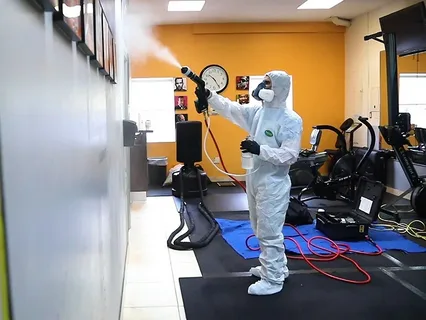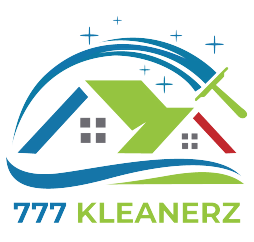
How Do Sanitization Services Help Improve Indoor Air Quality?
Indoor air quality plays a vital role in the overall health of the individuals who inhabit a space. Poor air quality can lead to a range of health problems, including respiratory issues, allergies, and even more serious conditions. One effective way to improve indoor air quality is through professional sanitization services. These services go beyond simple cleaning, targeting harmful pollutants and bacteria that can affect the air we breathe. In this blog, we’ll explore how sanitization services help improve indoor air quality and create a healthier living environment.
What is Indoor Air Quality?
Indoor air quality (IAQ) refers to the condition of the air inside buildings and structures, especially as it relates to the health and comfort of the occupants. The quality of indoor air can be impacted by a variety of factors, including allergens, dust, pet dander, bacteria, mold, and chemicals from cleaning products. When these contaminants are present in high concentrations, they can negatively affect health.
The Role of Sanitization Services in Indoor Air Quality
Sanitization services are designed to disinfect and sanitize surfaces, as well as improve the air quality in your home or office. These services target harmful pathogens, bacteria, and viruses that can contribute to poor indoor air quality. Regular cleaning might remove visible dust, but professional sanitization goes a step further by addressing invisible contaminants.
Deep Cleaning of Air Ducts
One of the most effective ways sanitization services help improve indoor air quality is by cleaning your air ducts. Over time, air ducts can accumulate dust, dirt, mold, and even allergens. When the HVAC system is running, it can spread these contaminants throughout the building, lowering the air quality. Sanitization services can clean and disinfect the entire air duct system, ensuring the air circulating in the building is free from harmful particles.
Disinfection of Surfaces
Sanitization services also focus on disinfecting high-touch surfaces such as door handles, light switches, countertops, and other commonly used areas. While these surfaces may not directly affect the air quality, they can still harbor harmful bacteria and viruses. By disinfecting these surfaces, sanitization services help reduce the risk of airborne pathogens, thus improving overall air quality.
Use of Specialized Equipment
Professional companies often use specialized equipment to enhance air quality. Air purifiers, HEPA filters, and ozone generators can be employed during the sanitization process to remove pollutants and allergens from the air. These devices are designed to capture particles as small as dust mites, pollen, and pet dander, preventing them from circulating in your home.
Why Indoor Air Quality Matters
The quality of the air inside your home or office directly impacts your health and comfort. Poor air quality can lead to a variety of health problems, including:
- Respiratory Issues: Exposure to pollutants can cause asthma attacks, bronchitis, and other respiratory conditions.
- Allergies: Dust, mold, and pollen are common allergens that can worsen symptoms like sneezing, itching, and watery eyes.
- Fatigue and Headaches: Poor air quality can lead to feelings of fatigue, dizziness, and persistent headaches.
- Increased Risk of Illness: Exposure to harmful bacteria and viruses can weaken the immune system and make you more susceptible to illness.
By improving indoor air quality, sanitization services can help reduce the likelihood of these health issues, providing a cleaner, safer living or working environment.
Benefits
Investing in professional services offers numerous benefits that go beyond simply cleaning the surface level. These benefits include:
1. Healthier Environment
The primary benefit of sanitization services is a healthier environment. By removing harmful bacteria, viruses, allergens, and other pollutants, these services help maintain a clean and safe space for you and your family. This is especially important for individuals with respiratory issues, allergies, or compromised immune systems.
2. Improved Air Quality
By targeting air ducts and using specialized equipment, sanitization services can improve the air quality in your home or office. Cleaner air means fewer allergens and pollutants circulating through your space, leading to better respiratory health and overall well-being.
3. Preventing Mold Growth
Mold is a common problem that can thrive in areas with high humidity or water damage. It can negatively affect air quality by releasing mold spores into the air. Professional services can address mold issues by disinfecting surfaces and using mold inhibitors to prevent further growth.
4. Long-Term Cost Savings
While hiring sanitization services might seem like an upfront expense, it can save you money in the long run. By regularly sanitizing your space, you reduce the risk of health issues, which can lead to fewer doctor visits and less missed work or school. Additionally, it can prolong the life of your HVAC system and reduce maintenance costs by keeping the air ducts clean.
5. Enhanced Comfort
A sanitized home or office is a more comfortable place to live or work. With improved air quality and a cleaner environment, you’ll notice fewer allergens and a fresher atmosphere. This can lead to better focus, higher productivity, and a more relaxing environment.
How Often Should You Schedule Sanitization Services?
The frequency of sanitization services depends on a variety of factors, such as the size of your space, the number of occupants, and any specific health concerns. However, it’s generally recommended to schedule professional services at least once or twice a year. If you live in an area with high levels of allergens or pollutants, more frequent cleanings may be necessary.
Conclusion
Sanitization services are an effective way to improve indoor air quality by addressing hidden pollutants and harmful microorganisms. Through deep cleaning, disinfection, and the use of specialized equipment, these services help create a healthier environment for both your home and office. Whether you have respiratory concerns, allergies, or just want to maintain a clean space, sanitization services can provide the solutions you need to enhance air quality and protect your health.
FAQs
1. How do sanitization services improve air quality?
Sanitization services improve air quality by cleaning air ducts, disinfecting surfaces, and using specialized equipment like air purifiers to remove harmful pollutants, allergens, and bacteria from the air.
2. Can sanitization services remove mold?
Yes, sanitization services can address mold growth by disinfecting affected areas and using mold inhibitors to prevent further growth. However, in severe cases, specialized mold remediation services may be required.
3. How often should I schedule sanitization services for better air quality?
It’s recommended to schedule sanitization services at least once or twice a year, depending on your space and specific needs. Homes with pets, children, or individuals with respiratory issues may benefit from more frequent cleanings.
4. What types of pollutants can sanitization services remove?
Sanitization services can remove a wide range of pollutants, including dust, pet dander, pollen, mold spores, bacteria, and viruses that contribute to poor air quality.
5. Are sanitization services safe for children and pets?
Yes, most professional services use non-toxic, eco-friendly products that are safe for children and pets. However, it’s always best to ask the service provider about the products they use.

